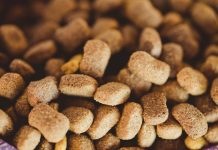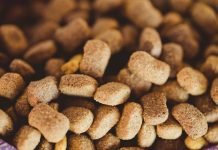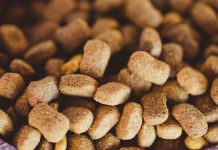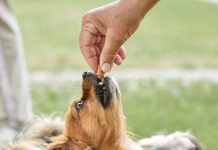Welcoming a new puppy into your home is an exciting adventure filled with playful moments and boundless affection. As a responsible pet owner, one of the most important aspects of nurturing your furry friend is ensuring they receive the best nutrition possible. With the ever-evolving landscape of pet care, staying informed about the latest puppy food trends is crucial to your puppy’s health and happiness. In this article, we’ll guide you through the most current and noteworthy trends in puppy nutrition, providing you with the knowledge to make informed choices that will support your puppy’s growth and well-being. From innovative ingredients to sustainable sourcing, discover the trends that every pet owner should be aware of to give their puppy a healthy start in life.
Understanding Nutritional Needs for Your Growing Pup
As your adorable furball grows, their dietary needs evolve, making it essential to keep up with the latest puppy food trends. Providing balanced nutrition is key to supporting their development, energy, and overall health. Here are some important considerations:
- High-Quality Proteins: Ensure that the primary ingredient in your puppy’s diet is a high-quality protein source, such as chicken, lamb, or fish. This supports muscle growth and tissue repair.
- Essential Fatty Acids: Omega-3 and Omega-6 fatty acids are crucial for a healthy coat and cognitive development. Look for foods enriched with fish oil or flaxseed.
- Grain-Free Options: While some puppies thrive on grain-inclusive diets, others may benefit from grain-free options to reduce the risk of allergies and digestive issues.
- Balanced Calcium and Phosphorus: The right balance of these minerals is critical for bone development. Avoid foods with excessive levels to prevent growth abnormalities.
Remember, each puppy is unique, so it’s important to monitor their growth and adjust their diet accordingly. Consulting with a veterinarian can provide personalized guidance to ensure your pup gets the best start in life.

Exploring Organic and Natural Puppy Food Options
In the quest for the healthiest choices for your furry friend, exploring organic and natural puppy food options can be an exciting journey. These products often boast ingredients that are free from pesticides, artificial preservatives, and GMOs, ensuring a diet that’s as close to nature as possible. As a pet owner, it’s crucial to understand the difference between organic and natural labels. While organic signifies that the food adheres to strict farming practices and standards, natural generally means that the food is free from synthetic additives. This can make a significant difference in your puppy’s overall health and well-being.
- Whole Ingredients: Look for foods that list whole meats and vegetables at the top of their ingredient list.
- Grain-Free Options: Many natural foods are now offering grain-free varieties, ideal for puppies with sensitive stomachs.
- Limited Ingredients: Foods with fewer ingredients can help reduce the risk of allergies and digestive issues.
As you navigate through the myriad of options, remember that each puppy is unique. Observing your puppy’s reaction to different foods and consulting with your veterinarian can help you tailor a diet that perfectly suits your pet’s needs. Investing in high-quality organic or natural puppy food could pave the way for a lifetime of health and happiness for your beloved companion.

Tips for Transitioning to a Balanced Puppy Diet
Transitioning your puppy to a balanced diet is a critical step in ensuring their long-term health and happiness. Here are some gentle tips to help you make this transition smoothly:
- Gradual Change: Mix a small amount of the new food with your puppy’s current food, gradually increasing the proportion over a week. This helps their digestive system adjust without causing distress.
- Monitor Reactions: Keep an eye on your puppy’s stools, energy levels, and coat condition. Any significant changes might indicate that the new diet isn’t agreeing with them.
- Consult Your Vet: Before making any major dietary changes, discuss with your veterinarian to ensure the new diet meets all nutritional requirements.
- Stay Consistent: Once the transition is complete, maintain a consistent feeding schedule. Puppies thrive on routine, which helps regulate their metabolism and energy levels.
Remember, every puppy is unique, and what works for one may not work for another. Patience and observation are key to finding the perfect balanced diet for your furry friend.
















